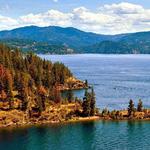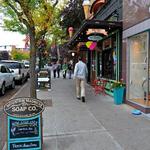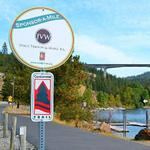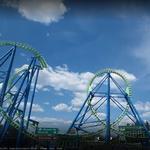Kristin & Matt

THINGS TO DO

Lake Coeur d'Alene
Creating a beautiful backdrop for the city, Lake Coeur d'Alene is one of the largest natural bodies of water in Idaho. Campgrounds, hiking trails, and beaches line the shores of the 25-mile lake, and popular activities atop the water include jet skiing, fishing, kite surfing, and launching a watercraft at one of twelve public boat launches. Abutting the city, the north side of the lake is the most developed for tourists, with spots near the water like McEuen Park and The Coeur d'Alene Resort. Simply looking out over the water from the beach at Coeur d'Alene City Park adds to the experience of visiting the city, especially when seaplanes land near the shore. A great wildlife spectacle occurs every winter on the lake when hundreds of bald eagles fly in to feed on spawning kokanee salmon, making for a great photo opportunity and reason to visit.

Downtown Coeur d'Alene
With shopping, dining, and live entertainment, something is always happening on the streets of downtown Coeur d'Alene. Backdropped by a beautiful waterfront area, the downtown area has over 100 retail stores, including specialty boutiques, fine art galleries, and antique shops for special treasures. Dining can be enjoyed throughout the day in downtown, starting with breakfast spots like The Garnet Cafe and ending with Beverly's for fine dining in the evening. Community celebrations that take place in the downtown district include holiday lighting events, festive parades, and a weekly Farmers Market throughout the warmer months of the year.

Tubbs Hill
Near downtown and adjacent to McEuen Park, Tubbs Hill is a publicly owned natural space featuring elevation and overlooks of Lake Coeur d'Alene. Miles of hiking trails stretch up and around Tubbs Hill including a 2.2-mile lakeside interpretive loop, which circles the hill.

North Idaho Centennial Trail
Stretching from the Idaho/Washington Border to Higgins Point on the eastern shores of Lake Coeur d'Alene, the North Idaho Centennial Trail is a 23-mile pedestrian path that takes in some of the best sights of the region. Bicycling is a popular way to navigate the trail, and pedestrians are also commonly seen sharing the pavement.

Route of the Hiawatha Trail
The Route of the Hiawatha trail is the crown jewel of rail-to-trail projects in the country. Over 15 miles of railroad track has been converted into a beautiful and gentle downhill biking and walking trail. There are ten tunnels, including the 1.7 mile St. Paul Pass Tunnel, and seven trestle bridges up to 230 feet high.


